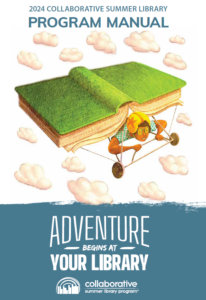

Programming Manual Children’s Chapter Example
Children between the ages of three and eight are hands-on explorers who make personal, meaningful connections with abstract materials (book and story concepts) when they are provided with opportunities to play with story themes. Effective library programming permits young children to touch, manipulate, create, and experiment. By combining active programming (companion crafts, games, projects) with passive programming (listening to a story, watching a flannel-board presentation), the unique developmental needs of both pre-readers and beginning readers can be met.
Independent Readers are the group of children traditionally targeted for summer library programs. They are still the primary audience for many libraries. For these readers, the process is simple: A goal is set, then children read on their own, report what they’ve read to the librarian or record the information, and receive a reward or certificate at the end of the program. There is frequently a game element to the program, allowing children to advance on a game board, add a token to a bulletin board or mural, or put in an entry for a prize drawing each time they report on a book.

Purchase our Current Online Manual
Many member states get free access to the online manual. Inquire with your state rep.
